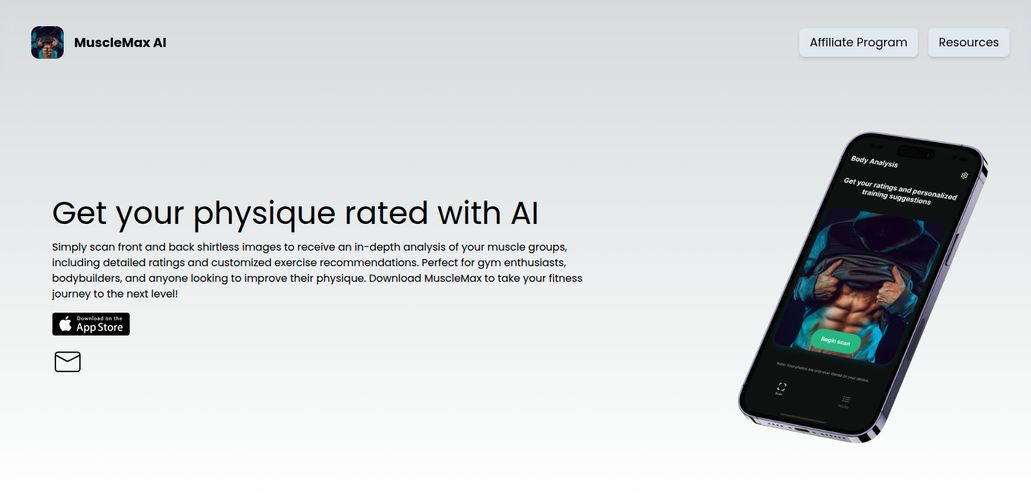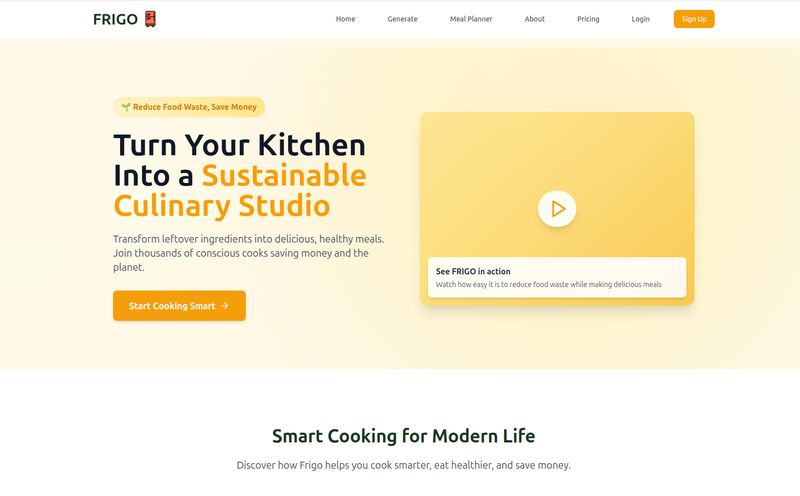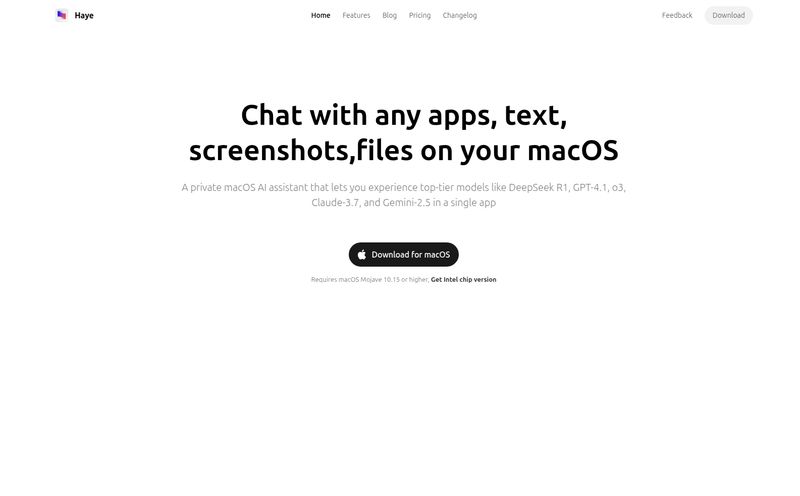Let’s have a little chat. You and me. For years, I’ve been in the trenches of digital marketing, watching trends come and go. But I’m also just a person who, like many, has a… complicated relationship with calorie counting. I’ve done it all. The meticulous weighing of chicken breast, the endless scrolling through MyFitnessPal to find the exact brand of yogurt, the soul-crushing moment you realize you have no idea how to log the mystery casserole your aunt brought over.
It’s a chore. It’s tedious. And frankly, it’s the number one reason most of us quit tracking our food. We just get tired of the admin.
So, when I stumbled upon Track-Calories.com, a tool that claims you can just snap a photo of your food and its AI will do the heavy lifting, my inner skeptic and my inner lazy dieter had a very loud argument. The skeptic was muttering about AI hallucinations and gimmickry. The lazy dieter was already reaching for his phone. Guess who won?
What Exactly Is This Track-Calories.com Thing?
At its core, Track-Calories.com is a web-based platform that uses artificial intelligence to analyze a picture of your meal and estimate its nutritional content. You take a pic of your plate, upload it, and bam—the AI breaks down the calories, and if you’re on the premium plan, even the macros and nutrients. It’s like having a little nutritionist living in your phone, but one that doesn’t judge you for that second slice of pizza.
One of the first things that caught my eye is that it's a Progressive Web App (PWA). That might sound a bit techy, but all it means is you can 'install' it to your phone's home screen directly from your browser. No app store, no big download, just a handy little icon that acts like a native app. I appreciate that. My phone is already a graveyard of forgotten apps.
How Does The AI Magic Actually Work?
The premise is beautifuly simple. You create an account, give it some basic info (age, weight, activity level, goals), and you're ready to go. When it's time to eat, you just point and shoot. The AI looks at the image, identifies the food items, estimates the portion sizes, and crunches the numbers for you. The whole process is designed to remove friction.
And here’s a key detail: there’s no need for additional labeling. You dont have to draw little boxes around the carrots and tell the app “these are carrots.” It’s designed to figure that out on its own. This is a massive improvement over earlier-generation image recognition tools I've seen.
It sounds like science fiction, doesn't it? Just show your phone your dinner and it knows. It's the kind of tech that makes you wonder what else is possible.

Visit Track Calories
Putting It to the Test: My Week of Snapping and Eating
Of course, I had to take it for a spin. For a week, I became that annoying person in the restaurant taking pictures of their food. For science, you know?
The signup was painless. I plugged in my details and my goal—to basically maintain my weight but be more mindful of my protein intake. The dashboard is clean and easy to navigate. No complaints there.
My first test: a simple breakfast. Two fried eggs, a slice of sourdough toast, and a few cherry tomatoes. I snapped a picture, uploaded it, and waited. A few moments later, it came back with a calorie estimate that was impressively close to what I would have logged manually. Okay, color me impressed.
But what about something more complex? Lunch was a homemade chicken salad with a bunch of mixed greens, cucumber, bell peppers, and a light vinaigrette. Here, the AI was a bit more general. It identified “salad with chicken” and gave a reasonable calorie range. Was it perfect? Probably not. It couldn't know the exact amount of dressing I used. But was it good enough to keep me on track? Absolutely. It was 80% of the accuracy for 10% of the effort, and that’s a trade-off I’ll take any day of the week.
The real challenge came with a bowl of homemade chili. So many ingredients. So much ambiguity. The result was, again, a solid ballpark figure. This experience really highlighted the tool's main strength and its primary weakness all at once.
The Good, The Bad, and The AI
Things I Genuinely Liked
The sheer convenience is the star of the show. It turns the dreaded task of logging into a two-second snap. This, more than anything, is what could make people stick with it. The interface is clean, the process is intuitive, and it just… works. The personalized dietary tracking is also a huge plus, adjusting my calorie targets based on the activity I logged. It felt dynamic, not static.
A Few Caveats to Keep in Mind
Let's be real, this technology is still evolving. Some people might argue that it’s not accurate enough, and they aren't entirely wrong. The accuracy of the AI analysis can definitely vary. A clear, well-lit photo of a steak and broccoli is going to yield a better result than a blurry shot of a layered casserole in a dimly lit room. As the folks at Google Research noted in their paper on a similar concept, Im2Calories, estimating volume and hidden ingredients from a 2D image is a fantastically complex problem.
So, you have to treat it as a highly educated guide, not an infallible oracle. It’s for directional awareness, not for medical precision. And on that note, the site is very clear that this is not a substitute for professional medical advice. If you're managing a health condition like diabetes, you need to be talking to a doctor or dietitian, not just an app.
Let's Talk Money: The Pricing Plans
So what does this slice of the future cost? The pricing structure is refreshingly straightforward. They have a free plan and a premium one.
I think this is pretty fair. The free plan is incredibly generous. You get three logs a day, which covers breakfast, lunch, and dinner for most people. It's more than enough to try the system out, see if it fits your lifestyle, and get a solid handle on your daily intake. Honestly, many casual users might never need to upgrade.
The Premium plan, at CHF 5 per month (which is around the same in USD at the time of writing), is for the power users. If you're a snacker, or if you're a data geek like me who wants to see the detailed nutrient analysis and get those improvement suggestions, it’s a very small investment for a whole lot of data.
| Plan | Price | Key Features |
|---|---|---|
| Free | CHF 0 | 3 scans/day, basic analysis, calorie tracking, activity logging, weight goal management. |
| Premium | CHF 5 / month | 10 premium scans/day, advanced analytics, detailed nutrient analysis, improvement suggestions. |
So, Who is This For?
I see this being a game-changer for a few types of people. First, the 'Consistency-Challenged' individual. That's the person (ahem, me) who starts tracking with great intentions but falls off after a week because it's just too much work. This tool demolishes that barrier.
Second, the 'Mindful Eater.' This is someone who doesn't want to obsess over every single gram but wants a general idea of what they're consuming to make better choices. This provides awareness without the anxiety.
It's probably not for the professional bodybuilder who needs to know their macro split down to the decimal point or, as mentioned, anyone requiring medical-grade dietary supervision.
The Final Verdict
So, is Track-Calories.com the perfect, all-knowing food tracker we've been dreaming of? Not quite. The technology isn't infallible... yet. But that's okay. It represents a monumental shift in how we can approach dietary awareness.
It successfully transforms food logging from a tedious data-entry task into a simple, almost futuristic action. It lowers the barrier to entry so much that it's hard to find an excuse not to be more aware of what you eat. For me, that's a huge win. It's a powerful tool that points toward a future where managing your health is less about spreadsheets and more about living your life. And I am absolutely here for that.
Frequently Asked Questions
- How accurate is the AI analysis really?
- It's pretty good, but not perfect. The AI is always learning. Accuracy depends heavily on the quality of your photo and the complexity of the meal. Think of it as a very strong estimate rather than a lab result.
- Is this a substitute for a dietitian or doctor?
- Absolutely not. The website is clear about this, and so am I. This is a tool for personal awareness and tracking general dietary goals. It is not intended to provide professional medical or nutritional advice.
- Do I need a fancy camera to use it?
- Nope. Any modern smartphone camera will do the job. The key is just to have a clear, well-lit photo where the food is easily visible. Don't try to snap a picture of your lasagna from across a dark room and expect miracles.
- Can it track complex meals or just simple foods?
- It can handle both, but its accuracy is higher on simpler, more distinct food items. For a complex stew or casserole, it will give you a general estimate for the dish as a whole, which is still incredibly useful.
- Is my data private?
- According to their privacy policy, they take data protection seriously. As with any online service, it's always a good idea to review the privacy policy yourself before signing up to make sure you're comfortable with it.
- Where is the company based?
- The website states that Track-Calories is based in St.Gallen, Switzerland, a country known for its strong data privacy laws.



